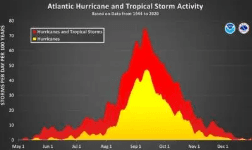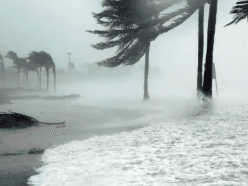With hurricane season upon us, it’s important to make sure you’re prepared. The good news is that there are plenty of ways to prepare for hurricane season, so you can feel confident that you and your loved ones are safe. In this blog post, we'll cover what you need to know about hurricanes so that you can prepare better for them.
Who is Affected By Hurricanes in Florida?

With more than 21 million people living in the state, hurricanes are a real and immediate threat to many people. When a hurricane strikes, it can leave behind devastating destruction that can affect your home and even your safety. That’s why it’s important to know who is at risk when a hurricane hits. The most vulnerable people during hurricane season are those who live in coastal communities or along rivers, as well as low-lying areas and areas prone to flooding. These areas may include beach towns, inland cities near bodies of water, or even isolated rural areas. Those living in mobile homes are especially at risk, as they provide very little protection against the powerful winds of a hurricane. The elderly and those with limited mobility can also be particularly vulnerable during a hurricane because they may not be able to evacuate safely.
Everyone in Florida needs to take steps to prepare for hurricane season and stay informed about the latest hurricane activity. Understanding who is affected by hurricanes in Florida is the first step in staying safe and protecting your property during the storm.
What Differentiates a Tropical Storm From a Hurricane?
The main difference between a hurricane and a tropical storm is wind speed. Hurricanes are much more powerful and destructive than tropical storms because they have sustained winds that reach at least 74 mph. Tropical storms, on the other hand, form from tropical depressions and have wind speeds of 39 mph or less. In addition to wind speed, hurricanes typically have a large and distinct eye, a low-pressure area at the center of the storm. This is surrounded by rain bands, which are thick rings of clouds with intense rainfall. These rain bands can stretch hundreds of miles from the eye of the storm. The strongest winds in a hurricane are located in the eyewall, which is the circle of clouds surrounding the eye. Hurricanes can last for days, while tropical storms usually only last a few hours or up to a day. Hurricanes also tend to bring with them higher amounts of rainfall and storm surges than tropical storms, making them more dangerous and destructive. It's important to remember that all hurricanes start as tropical storms and can quickly strengthen into a hurricane if conditions are right. So it's important to take all tropical storms seriously and be prepared for possible hurricane conditions.

When Do Hurricanes Happen?
Photo courtesy of the National Hurricane Center & Central Pacific Hurricane Center

The Atlantic hurricane season officially runs from June 1 to November 30. However, hurricanes can occur outside of these dates; storms have been recorded every month of the year. Most tropical storms and hurricanes form between August and October as the warm waters of the Atlantic begin to heat up. This is because hurricanes are fueled by the heat of the ocean and need at least 79°F of water temperature to form. Hurricanes can even form in the spring months, although they are less common during this period. It’s important to remember that hurricanes can happen any time of year. Although there are typically more storms during the peak season, you should always be prepared for any unexpected storms. Understanding when hurricanes happen is an important part of being prepared for the hurricane season.
Where Can We Expect Hurricanes to Make Landfall?

Hurricanes in Florida usually make landfall along the eastern coast of the state. One of the most notorious storms to hit the area was Hurricane Andrew in 1992. It is important to note that hurricanes are not limited to the eastern coast of Florida. Hurricanes can strike anywhere along the coast, including the Keys, as well as inland areas like Orlando. Hurricanes can also travel further north along the Atlantic Coast, as far as Georgia and South Carolina. No matter where you live in Florida, it is important to be aware of potential storm paths and pay attention to hurricane forecasts. By keeping up with news and updates from local government officials, you can stay informed and take steps to protect yourself and your family in the event of a hurricane.
Why Do Hurricanes Form?
Hurricanes are large, destructive tropical systems that can cause serious damage and loss of life. But why do these powerful storms form? The answer lies in a few key factors: warm ocean water, atmospheric moisture, light winds, and an unstable air mass. When warm water evaporates from the surface of the ocean, it rises into the atmosphere as moist air. This air then cools as it rises and condenses, forming clouds. As more and more of this moist air rises, it creates an area of low pressure. The surrounding areas of high pressure are then drawn in to fill the gap, creating wind. As the air moves inward toward the center of the storm, the pressure decreases further. This creates an even stronger wind. The winds spiral around the center of the storm, creating an organized rotation called a cyclone. As the storm continues to move over warm ocean waters, it can draw more energy from the water and continues to grow in strength. When conditions are just right, this process can create a hurricane. It is important to understand why hurricanes form so we can be better prepared for them when they do occur. Knowing what to expect can help people stay safe and protect their homes from potential damage.
Understanding the who, what, when, where, and why of hurricanes is key to knowing how to safely navigate this season as a Florida resident. Whether you’ve just moved to this state or have lived here your entire life, our team at Elite is always here to help you confidently weather the storm with solutions that will keep you powered up and informed. Call our team today for more information!

